We kindly suggest that you read the entire , as with it we try to give you detailed technical and historical information to guarantee the authenticity of our objects.
Beautiful Art Deco sculpture in white craquelé ceramic depicting a pair of panthers; the noble animals are depicted walking, with their plush stride, in the tall grass in a calm and relaxed attitude; the powerful muscles of the beasts are relaxed, but the representation is always charged with strength and pride, a classic example of the Art Deco style that exalted in its artistic expressions the forms, strength, and power of both humans and animals. The object features very distinctive workmanship: the piece of raw ceramic was first molded into its final soft and elegant form, then fired at about 1000° C, then an ancient technique was used by applying "crystalline" (a transparent vitreous coating) with an ox brush; then distributed, again with a brush, white glaze over the entire body of the panthers; the glazing stage requires a lot of skill, as the glaze must be evenly deposited on the surface of the object, at which point, very quickly, to fix the glaze, the piece was put into the kiln between 920 and 940 degrees for the final firing. By looking at the underside we can better understand this technique. The panther pair was made between 1930 and 1933 in the Luneville area of France in the style of the Saint-Clement pottery manufacturer. Luneville's Saint Clement (founded in 1758) is a famous French ceramic manufactory located in Luneville, in the Lorraine region. Saint-Clement's production, and that of the entire Luneville area, is known for its high quality and variety of styles. Over the centuries, the factory and artisans in the area have produced a wide range of ceramic wares, including plates, vases, figurines, sculptures, and decorative objects. The production is distinguished by the beauty of the decorations, attention to detail, and the use of bright colors. Our sculpture also has another special feature: the "craquelé" finish of the pottery. Craquelure in painting is the dense network of cracks that forms on the surface of paintings; it is often used to determine the age of a painting and thus uncover any fakes. The decorating industry, towards the end of the eighteenth century, when the trend was to decorate with objects with a strong reference to antiquity, invented the aging technique of craquelure to offer it in the manufacture of a wide variety of objects and materials such as ceramics and glass. This technique can be carried out with a chemical method, acting on the enamel of the object with special products that affect it uniformly with a lattice effect. Still, the best method is the Japanese processing technique called Raku, which involves a special type of firing of the enamel at high temperatures, which is then cooled by extracting it quickly from the kiln, this process, in which it is necessary to carefully and precisely respect certain times and temperatures, inevitably creates the formation of craquelé effect cracks on the enameled surface; the raku technique makes it possible to create objects of unique and unrepeatable design; the artisans of Luneville carried out this operation after the last firing in the sculpture kiln. Today, the products of Saint-Clement, and those of the entire Luneville region, are still highly sought after, and the manufactory has maintained its reputation for excellence in the field of artistic ceramics. The item is in good condition and has a small and barely visible chip on the corner of the base (see photo). Measures width cm.38, depth cm.20, height cm.10.
Vi suggeriamo gentilmente di leggere l'intero documento, con il quale cerchiamo di fornirvi informazioni tecniche e storiche dettagliate per garantire l'autenticità dei nostri oggetti.
Bella scultura Art Déco in ceramica craquelé bianca raffigurante una coppia di pantere; i nobili animali sono raffigurati mentre camminano, con il loro passo felpato, nell'erba alta in un atteggiamento calmo e rilassato; i potenti muscoli delle bestie sono rilassati, ma la rappresentazione è sempre carica di forza e fierezza, un classico esempio dello stile Art Déco che esaltava nelle sue espressioni artistiche le forme, la forza e la potenza sia degli uomini che degli animali. L'oggetto presenta una lavorazione molto particolare: il pezzo di ceramica grezza è stato prima modellato nella sua forma finale morbida ed elegante, poi cotto a circa 1000° C, quindi è stata utilizzata una tecnica antica applicando la "cristallina" (un rivestimento vetroso trasparente) con un pennello di bue; quindi è stata distribuita, sempre a pennello, la glassa bianca su tutto il corpo delle pantere; la fase di smaltatura richiede molta abilità, in quanto lo smalto deve essere depositato uniformemente sulla superficie dell'oggetto; a questo punto, molto rapidamente, per fissare lo smalto, il pezzo veniva messo in forno tra i 920 e i 940 gradi per la cottura finale. Osservando il lato inferiore possiamo comprendere meglio questa tecnica. La coppia di pantere è stata realizzata tra il 1930 e il 1933 nella zona di Luneville, in Francia, nello stile della manifattura Saint-Clement. La Saint Clement di Luneville (fondata nel 1758) è una famosa manifattura ceramica francese situata a Luneville, nella regione della Lorena. La produzione di Saint-Clement, e quella dell'intera area di Luneville, è nota per l'alta qualità e la varietà di stili. Nel corso dei secoli, la fabbrica e gli artigiani della zona hanno prodotto un'ampia gamma di oggetti in ceramica, tra cui piatti, vasi, statuette, sculture e oggetti decorativi. La produzione si distingue per la bellezza delle decorazioni, l'attenzione ai dettagli e l'uso di colori vivaci. La nostra scultura ha anche un'altra caratteristica speciale: la finitura "craquelé" delle ceramiche. La craquelure in pittura è la fitta rete di crepe che si forma sulla superficie dei dipinti; viene spesso utilizzata per determinare l'età di un dipinto e quindi scoprire eventuali falsi. L'industria della decorazione, verso la fine del XVIII secolo, quando la tendenza era quella di decorare con oggetti con un forte richiamo all'antichità, inventò la tecnica di invecchiamento della craquelure per proporla nella fabbricazione di una grande varietà di oggetti e materiali come la ceramica e il vetro. Questa tecnica può essere realizzata con un metodo chimico, agendo sullo smalto dell'oggetto con prodotti speciali che lo intaccano uniformemente con un effetto reticolo. Ancora, il metodo migliore è la tecnica di lavorazione giapponese chiamata Raku, che prevede un particolare tipo di cottura dello smalto ad alte temperature, che viene poi raffreddato estraendolo velocemente dal forno; questo processo, in cui è necessario rispettare con attenzione e precisione determinati tempi e temperature, crea inevitabilmente la formazione di crepe ad effetto craquelé sulla superficie smaltata; la tecnica raku permette di creare oggetti dal design unico e irripetibile; gli artigiani di Luneville eseguivano questa operazione dopo l'ultima cottura nel forno di scultura. Ancora oggi i prodotti di Saint-Clement, e di tutta la regione di Luneville, sono molto ricercati e la manifattura ha mantenuto la sua reputazione di eccellenza nel campo della ceramica artistica. L'oggetto è in buone condizioni e presenta una piccola e poco visibile scheggiatura sull'angolo della base (vedi foto). Misura larghezza cm.38, profondità cm.20, altezza cm.10.
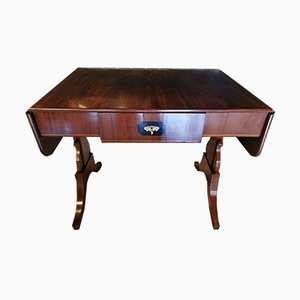
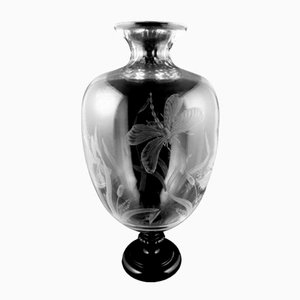
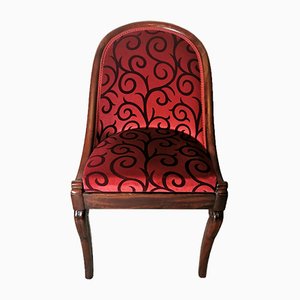
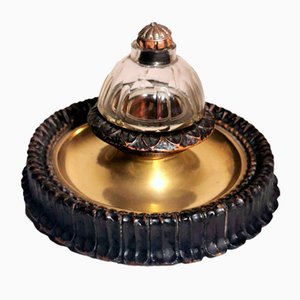

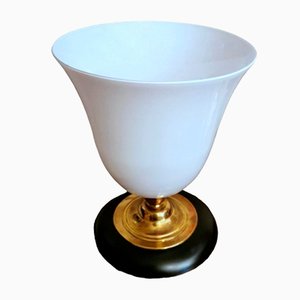
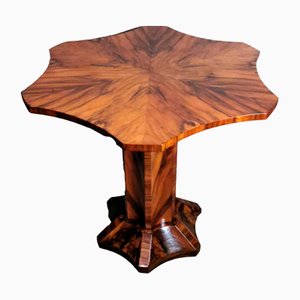

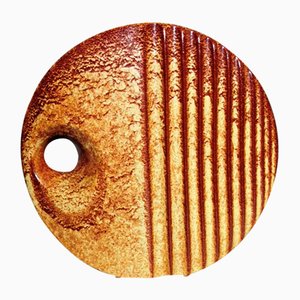
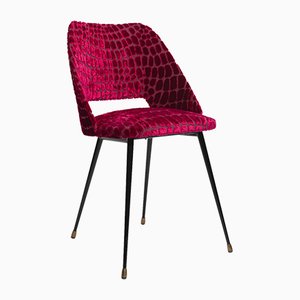
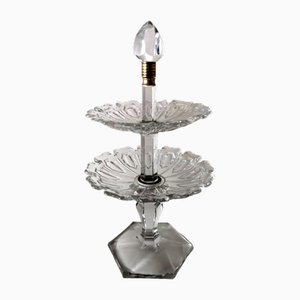
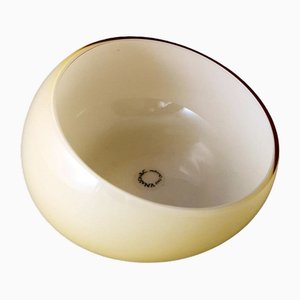
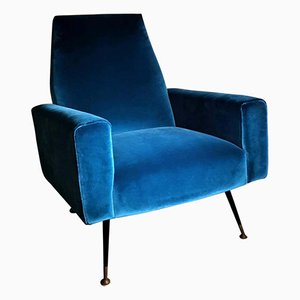
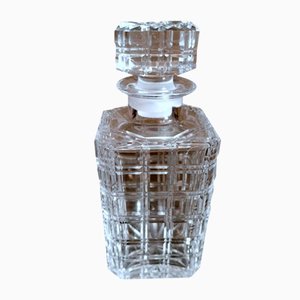
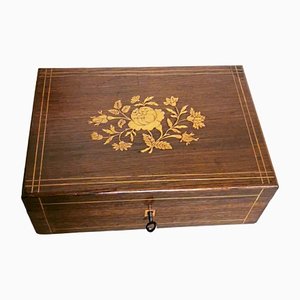
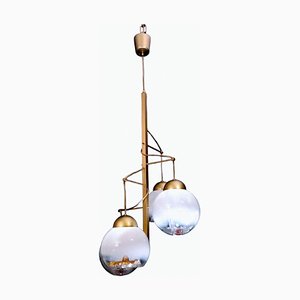
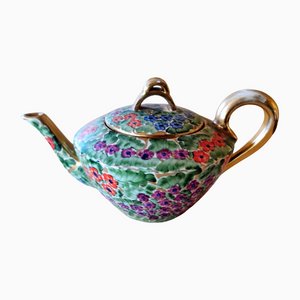
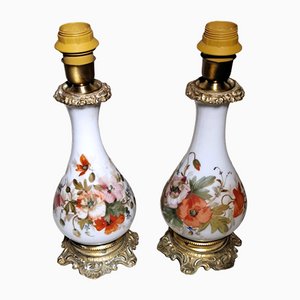

Contattaci
Fai un'offerta
Abbiamo notato che sei nuovo su Pamono!
Accetta i Termini e condizioni e l'Informativa sulla privacy
Contattaci
Fai un'offerta
Ci siamo quasi!
Per seguire la conversazione sulla piattaforma, si prega di completare la registrazione. Per procedere con la tua offerta sulla piattaforma, ti preghiamo di completare la registrazione.Successo
Grazie per la vostra richiesta, qualcuno del nostro team vi contatterà a breve.
Se sei un professionista del design, fai domanda qui per i vantaggi del Programma Commerciale di Pamono